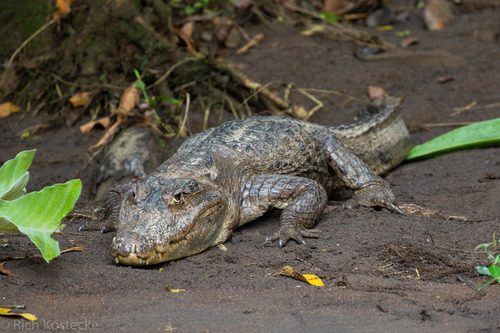
Spectacled Caiman
Caimans, diverse crocodilians of Central and South America's waterways, range from the diminutive Dwarf Caiman to the formidable Black Caiman. These adaptable reptiles, distinguished by a bony ridge between their eyes, are integral to aquatic ecosystems, balancing populations and contributing to biodiversity through their predatory and prey roles.
6.0 - 300.0 kg
Weight
Length: 1.5 - 6.0 m
Size
Brown, Grey, Black, Dull, Olive
Color
4-10 years
Age of Sexual Maturity
25 mph
Top Speed
Characteristics
The Caiman species, including Spectacled Caiman (Caiman crocodilus), Black Caiman (Melanosuchus niger), Yacare Caiman (Caiman yacare), Dwarf Caiman (Paleosuchus palpebrosus), Schneider's Smooth-fronted Caiman (Paleosuchus trigonatus), and Broad-snouted Caiman (Caiman latirostris), are small to medium-sized crocodilians found in Central and South America. They inhabit freshwater environments like rivers, swamps, and marshes. Notable for their bony ridge between the eyes, they exhibit varied coloring and size, with the Black Caiman being the largest. Caimans play a crucial role in their ecosystems as both predators and prey, maintaining the balance of aquatic environments.
Distribution Range of the Spectacled Caiman
The species mentioned belong to the family Alligatoridae, commonly referred to as caimans, and are native to Central and South America. Their geographical distribution spans across various countries and regions:
1. **Caiman crocodilus (Spectacled Caiman)**: Found in countries such as Mexico, Central America, and throughout northern South America including Colombia, Venezuela, and Brazil.
2. **Melanosuchus niger (Black Caiman)**: Predominantly found in the Amazon Basin regions of countries like Brazil, Peru, Ecuador, and Bolivia.
3. **Caiman yacare (Yacare Caiman)**: Inhabits areas in central South America, notably in Brazil, Bolivia, Paraguay, and northern Argentina.
4. **Paleosuchus palpebrosus (Cuvier's Dwarf Caiman)**: Distributed across the Amazon and Orinoco basins, found in countries such as Brazil, Colombia, and Venezuela.
5. **Paleosuchus trigonatus (Schneider's Smooth-fronted Caiman)**: Found in the Amazon and Orinoco basins, in countries like Brazil, Peru, and Guyana.
6. **Caiman latirostris (Broad-snouted Caiman)**: Mainly found in southeastern South America, particularly in Brazil, Argentina, Uruguay, and Paraguay.
Spectacled Caiman's Habitat
Environmental Conditions
Caimans generally inhabit freshwater environments such as rivers, lakes, marshes, and swamps. They prefer warm, tropical climates with high humidity and abundant water sources.
Ecological Niche
As apex predators in their ecosystems, caimans play a crucial role in maintaining the balance of aquatic and terrestrial food webs. They feed on a variety of prey, including fish, amphibians, birds, and small mammals. Different species may have specific adaptations to their habitats, such as the Black Caiman's darker coloration suited for darker waters or the Dwarf Caiman's preference for fast-flowing streams and forested waterways.
Copyright @ Nature Style Limited. All Rights Reserved.
 English
English